How to Poach Pears
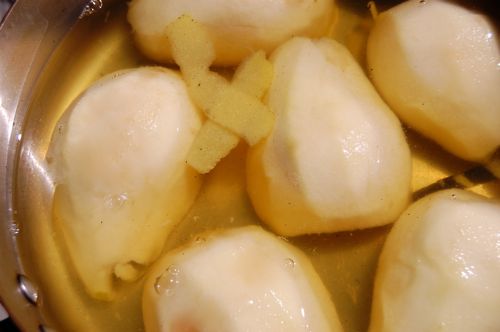
Let’s clear about something: I have no problem whatsoever with canned pears. They make perfectly good pear tarts (to say nothing of great late-night snacks, at least for me). A truly exceptional pear tart, however, starts with homemade poached pears, which allow you to bring flavors to the party that you wouldn’t be able to introduce otherwise (notably, those having to do with alcohol). Start with:
4 pears (Bartlett are a good choice)
white wine or water with sugar added (10 ounces for every quart)
half a vanilla bean
one lemon
It’s important that the pears be perfectly ripe. Under-ripe pears won’t become tender with cooking (or by the time they do, they’ll have turned to complete mush). You want them slightly soft all over. A few bruises are alright.
Pour the wine (or water and sugar) into a large pan, one that will fit all the pears comfortably in a single layer. Split the vanilla bean and throw it in. Using a vegetable peeler, peel the zest off the lemon, add it to the pan, then squeeze in a couple of tablespoons of the lemon juice.
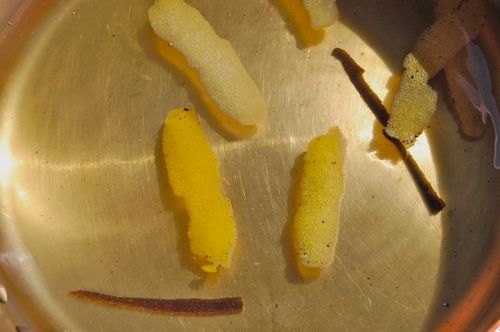
Bring the pan to a simmer. Meanwhile, prepare the pears. Split them:

Take out the stems:
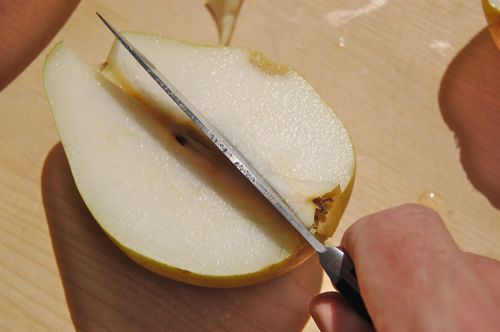
Core them with a melon baller:
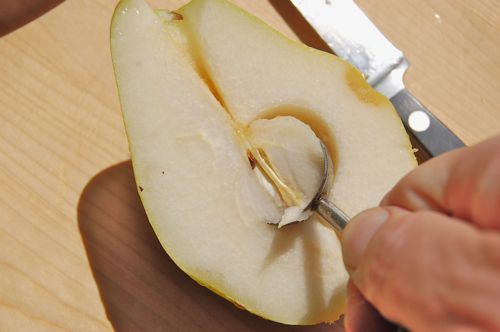
…and using a vegetable peeler, gently take off the skins. Set them aside on a plate while the poaching liquid comes up to temperature…
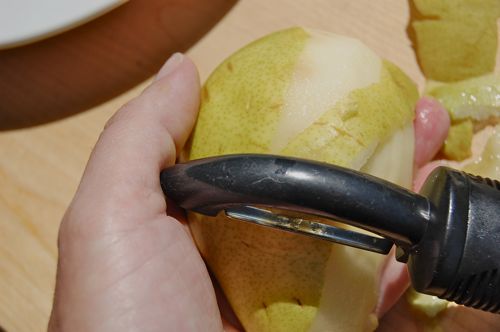
Don’t worry if there are some bruises. They’ll “cook out” as the pears poach. Slide the pears into the hot liquid, making sure they’re completely submerged to avoid discoloration (a parchment lid or plastic plate can help weight them down). Bring the liquid back to a gentle simmer poach for five minutes. Then, with a large spoon, turn them over. Poach another ten minutes until the pears are soft all the way through (test with a cake tester or toothpick if you like). When the pears are done, let them cool about an hour, then either use them or store them in their liquid in the refrigerator for up to 3 days.
Depending on your taste and/ or the time of year, a variety of other spices can be added to the poaching liquid, including cinnamon (a stick), cloves (a few), cardamom pods (one) and even black peppercorns (a teaspoon). Get as creative as you like!
UPDATE: What kind of wine? Good question! Reader Jeffrey suggests a something sweet and German, a Riesling or even a gewustraminer. However I do know some folks on the other end of the spectrum who swear by a dry and oaky chardonnay. Choose according to your tastes!